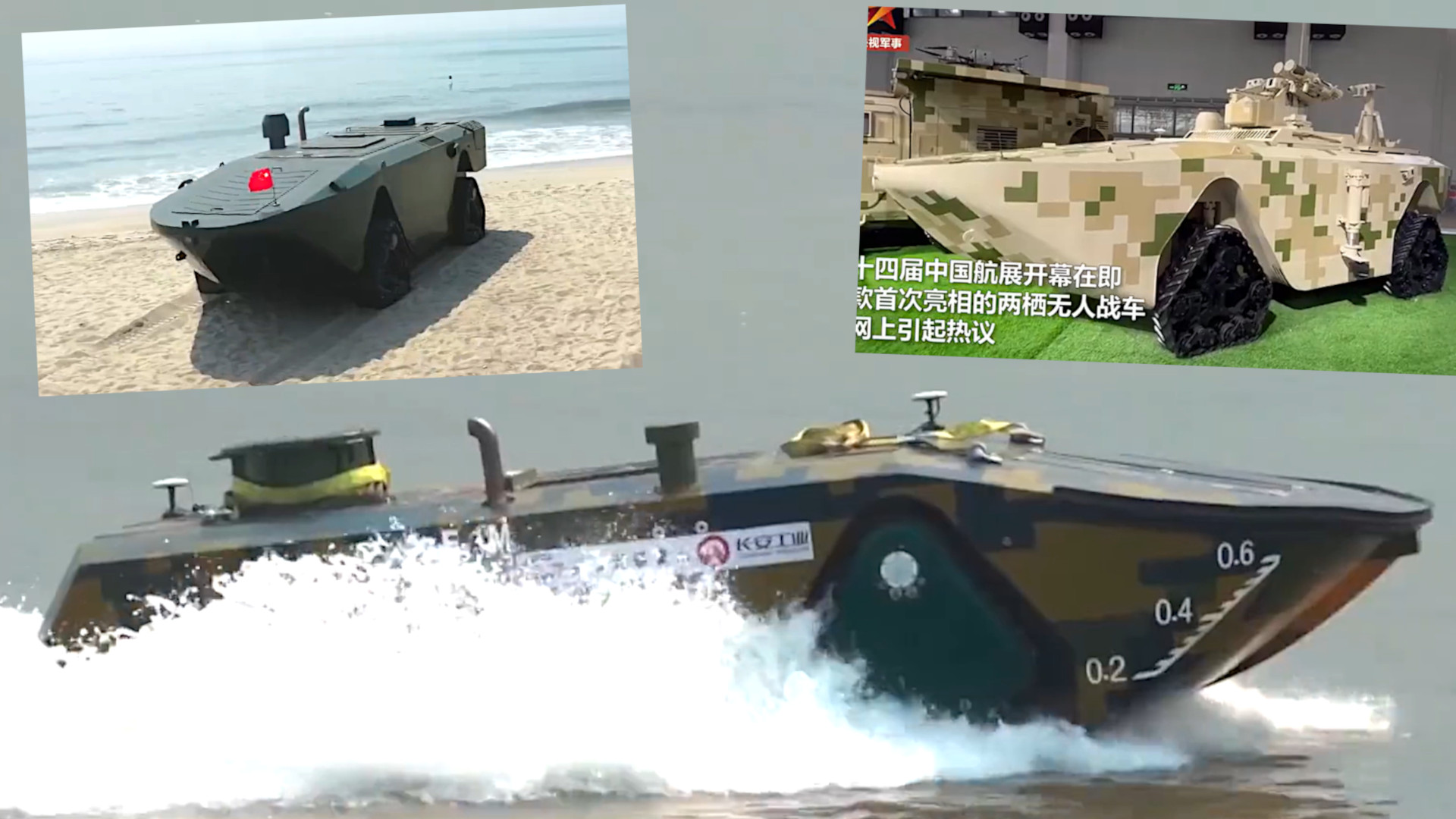Chinese state-run defense and automotive conglomerate China South Industries Group Corporation unveiled a new amphibious uncrewed ground vehicle with a boat-like hull and four sets of rubber-band-type tracks at this year’s recently concluded Zhuhai Airshow. Now we have video footage showing it zipping along in the water and through the snow.
The clips of what is simply described as an “Amphibious Unmanned Combat Vehicle” were included in a promotional montage, from China South Industries Group Corporation (CSGC) showing various vehicles and weapon systems, which emerged on social media today, as seen below.
The first look at the new uncrewed amphibious vehicle from CSGC, a firm also known as the China Ordnance Equipment Group Corporation, had come more than a week ago amid preparations for the 2022 Zhuhai Airshow, which officially opened last week and wrapped up over the weekend.
At the core of CSGC’s amphibious uncrewed vehicle is a broadly boat-shaped hull. This has been a common design choice for wheeled amphibious vehicles for decades. The U.S. 6×6 DUKW amphibious truck, better known as the “Duck,” and the 4×4 Ford GPA amphibious jeep are notable World War II-era examples.

However, rather than four wheels, CSGC’s uncrewed vehicle has a quartet of triangle-shaped rubber-band-style tracks. Tracks of this kind are widely available as conversion kits for SUVs, pickup trucks, all-terrain vehicles, and other vehicle types, and are intended to provide improved mobility on various kinds of softer terrain, such as sand and snow.
The video below shows various vehicles fitted with tracks from U.S. firm Mattracks, one well-known producer of conversion kits of this kind.

The tracks could be particularly beneficial for helping CSGC’s uncrewed amphibious combat vehicle get out of the water on a beach, something that even purpose-built wheeled amphibious vehicles sometimes have difficulties with. The company’s promotional video also highlighted the design’s mobility in snowy conditions.
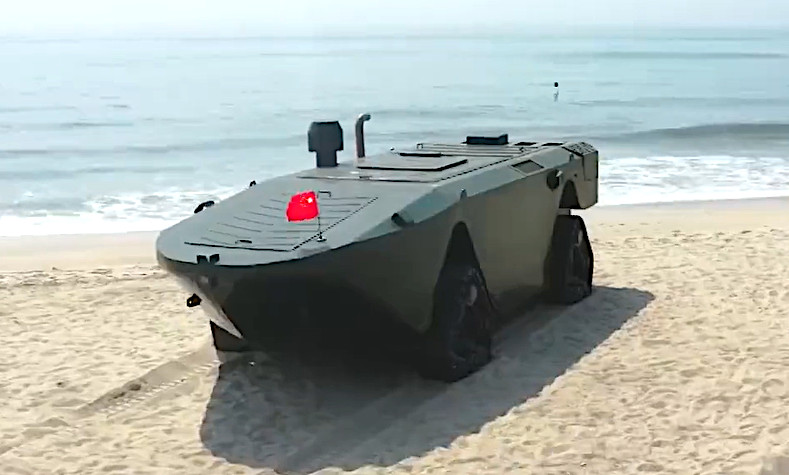

In the water, the uncrewed amphibious vehicle is powered at least primarily by a water jet-type propulsion system. It’s unclear whether or not the tracks can be used to provide additional propulsion or to help with maneuvering, but the promotional video clearly shows that they are designed to be retracted up into a stowed position to improve the vehicle’s overall hydrodynamics. Specific details about vehicle’s current or expected performance in the water or on land do not appear to be readily available.
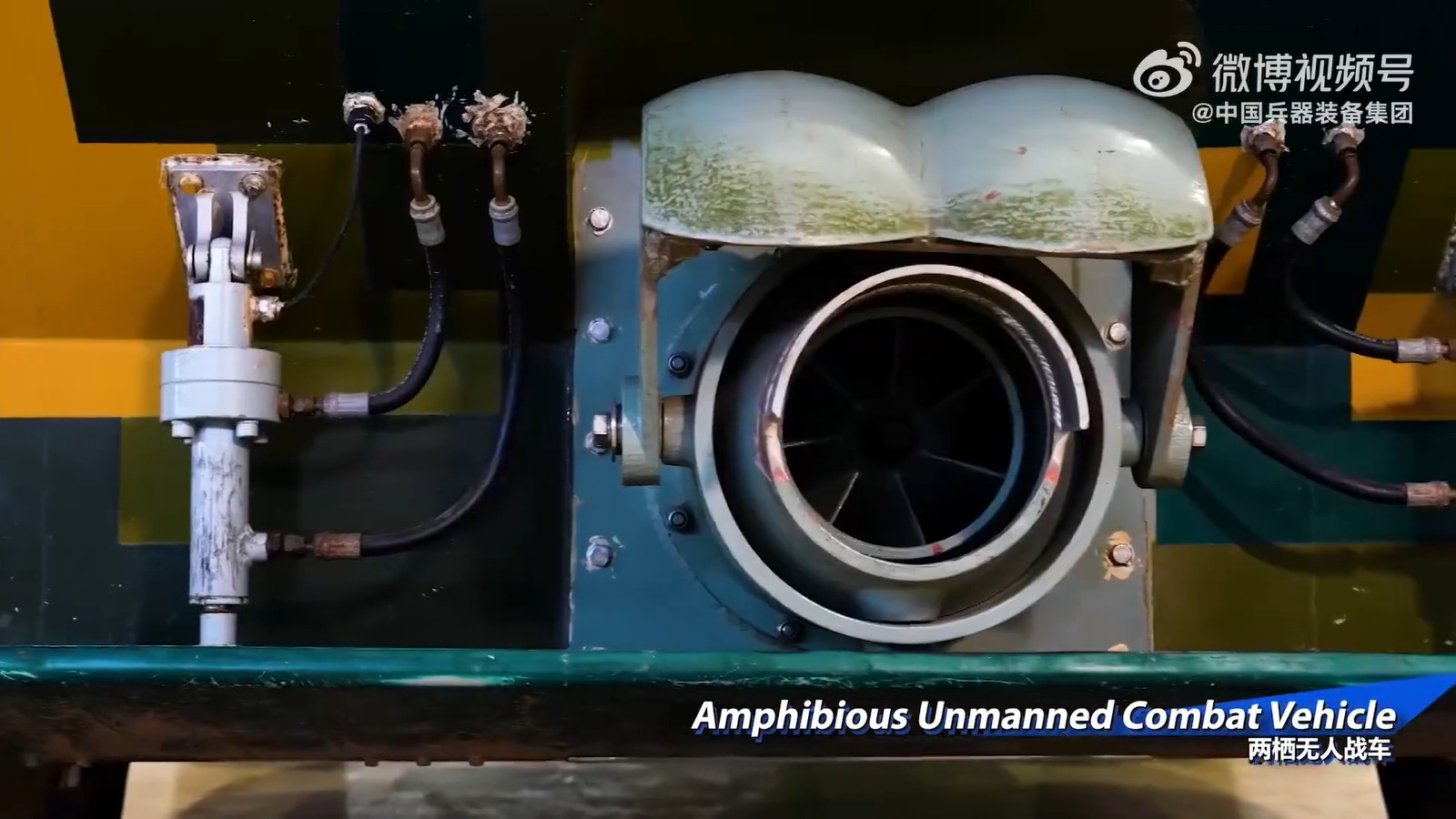
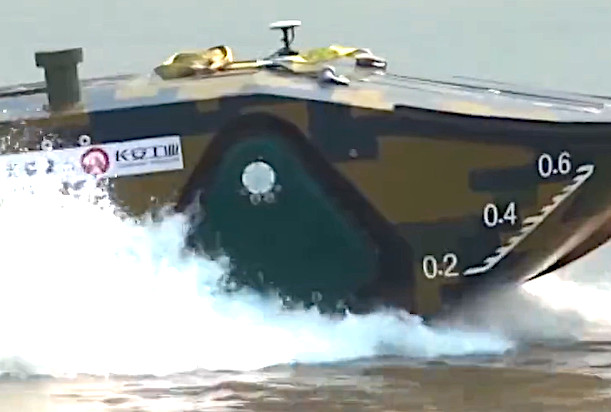
There are slight differences overall between the vehicle seen actually in motion in the promotional montage and the one that was on display at Zhuhai Airshow. It is possible that the example at the airshow was a mockup meant to reflect a more production-representative version. The video clips CSGC has now put out do appear to show a prototype, which could be an older iteration of the design, undergoing various tests.
It’s not entirely clear what actual operational capabilities CSGC might have envisioned for this uncrewed amphibious vehicle. The version at Zhuhai featured a small turret on top with a pair of what look to be anti-tank guided missiles in individual launch tubes, as well as a sighting system that could include electro-optical and infrared cameras. An additional mast on the rear deck could hold other sensors, while the exact purpose of a separate outrigger-like protrusion on the left side of the hull is unclear.
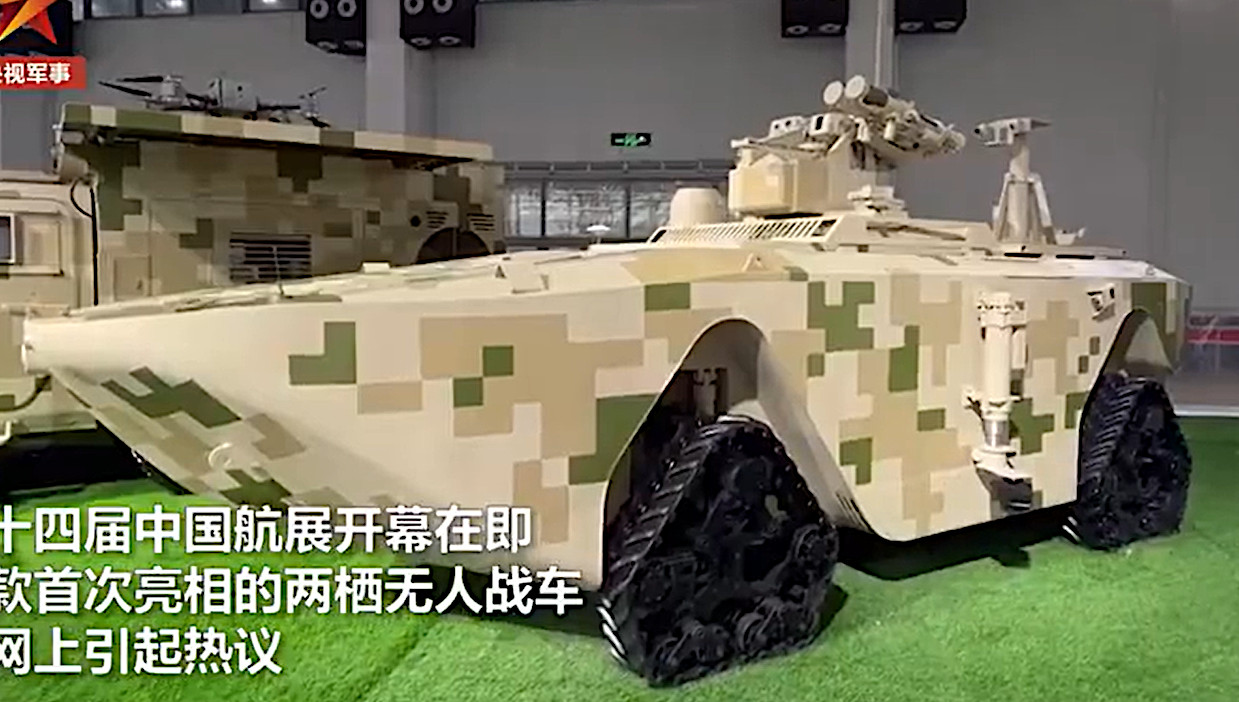
While the promotional montage does not appear to show weapons or sensor systems fitted to the vehicle, it does show cargo rack can also be installed on top.
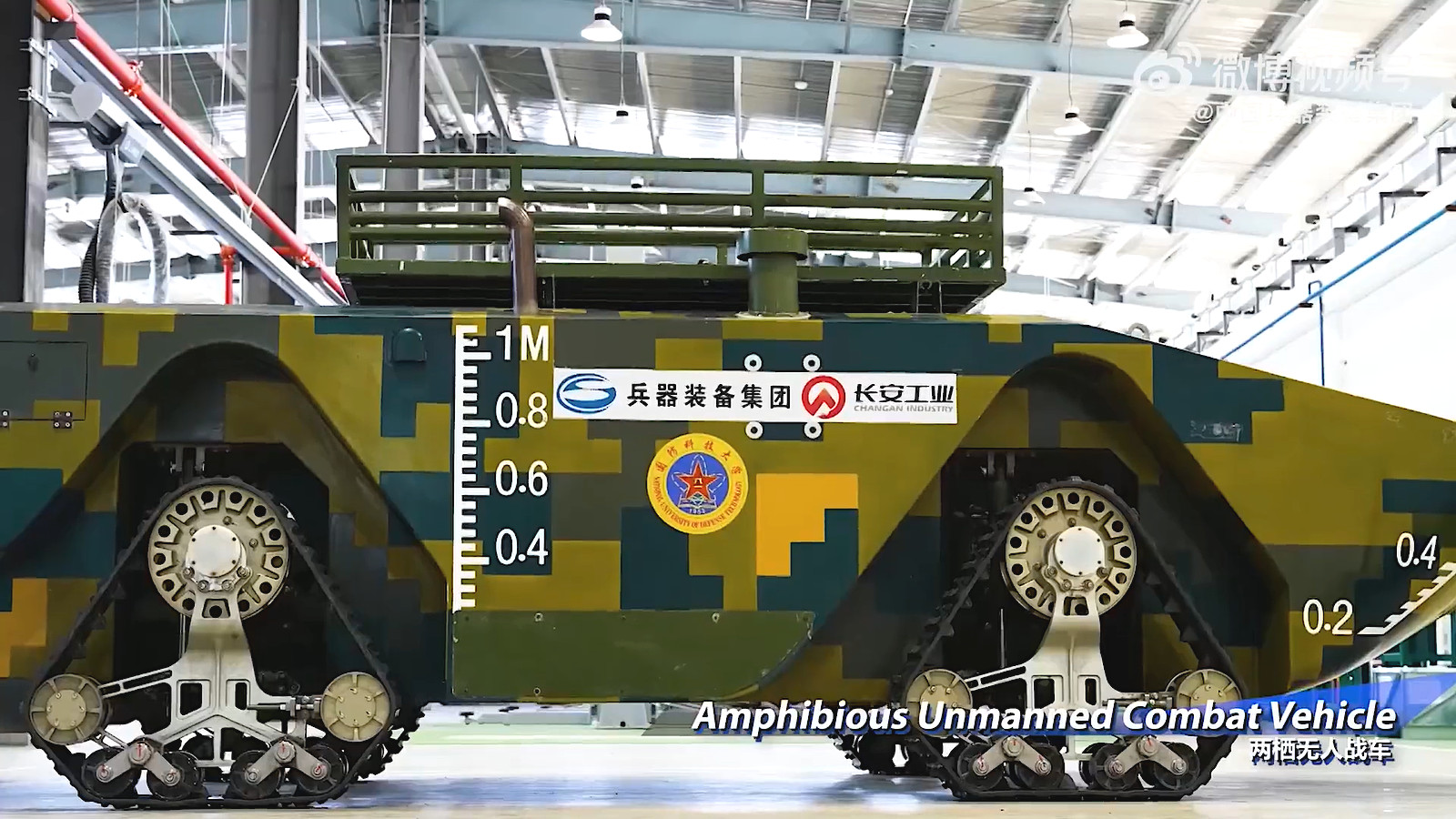
It’s also not clear how the vehicle is controlled and what, if any, autonomous capabilities or ability to work cooperatively with other uncrewed platforms it might have. It is known that many Chinese state-run advanced technology-focused academic institutes and corporate enterprises have been working hard in the autonomy space, leveraging developments in artificial intelligence and machine learning, and with eyes towards using these capabilities for military and civilian purposes.
In addition, the People’s Liberation Army (PLA) has been working to improve its amphibious capabilities overall and expand its overall capacity to conduct those kinds of operations in recent years, including with the commissioning of new large-deck amphibious assault ships. The PLA has also garnered significant attention globally more recently with exercises demonstrating its ability to leverage commercial roll-on/roll-off ferries to provide additional amphibious capacity.
The PLA certainly faces numerous potential flashpoints where amphibious landings would not only be a part of the overall operational picture, but would be central to their success, such as an intervention against Taiwan. U.S. officials have been increasingly outspoken about their growing concerns about the potential for Chinese military action across the Taiwan Strait in the coming years.
“Large-scale amphibious invasion is one of the most complicated and difficult military operations, requiring air and maritime superiority, the rapid buildup and sustainment of supplies onshore, and uninterrupted support,” a Pentagon report released last year on Chinese military developments in 2020 notes. “Significant reorganizations and cross-sea amphibious assault training in recent years likely indicate supporting a Taiwan operation is a high priority for the [Chinese] Army.”
Chinese forces could be ordered to seize control of various other islands in the western Pacific, including in the hotly contested South China Sea, in the event of a major conflict in the region, too.
“In 2020, the PLANMC [People’s Liberation Army Navy Marine Corps] continued to mature an enlarged force structure of eight brigades intended to be scalable and mobile, modernize its capabilities for joint expeditionary operations—including operations beyond the First Island Chain—and become more proficient in conventional and irregular warfare,” according to the 2021 Pentagon report on China’s military. “The focus of the PLANMC appears to be shifting towards global expeditionary operations.”

As the Pentagon report highlighted, amphibious operations, especially those involving contested landings, present notorious risks for the attacker, both for ships launching those forces and those elements as they head to the beach. Adding a significant number of uncrewed combat vehicles, especially in the initial waves, could help reduce risks to crewed platforms and dismounted troops, while still providing useful additional firepower and sensor coverage, among other things. In later waves, these could be used to ferry cargo to established beachheads or might provide other kinds of support, such as acting as communications nodes or mobile electronic warfare systems.
If CSGC’s uncrewed amphibious combat vehicle is relatively low cost, it could make it even easier to field them in greater numbers and deploy them in riskier situations where there might be increased chances of them being destroyed. In this U.S. military, among others, the word “attritable” is often used to describe uncrewed systems that are designed to strike a balance between cost and capabilities, and are therefore can be more readily employed in higher-threat environments that might otherwise preclude the use of a costlier, more exquisite platform.
How close CSGC’s amphibious uncrewed combat vehicle may be to actually entering service with the PLA remains to be seen, though it has clearly gone through a certain amount of development already. It certainly would not be hard to envision these and other uncrewed ground vehicles factoring heavily into future Chinese amphibious operations.
Contact the author: joe@thedrive.com
